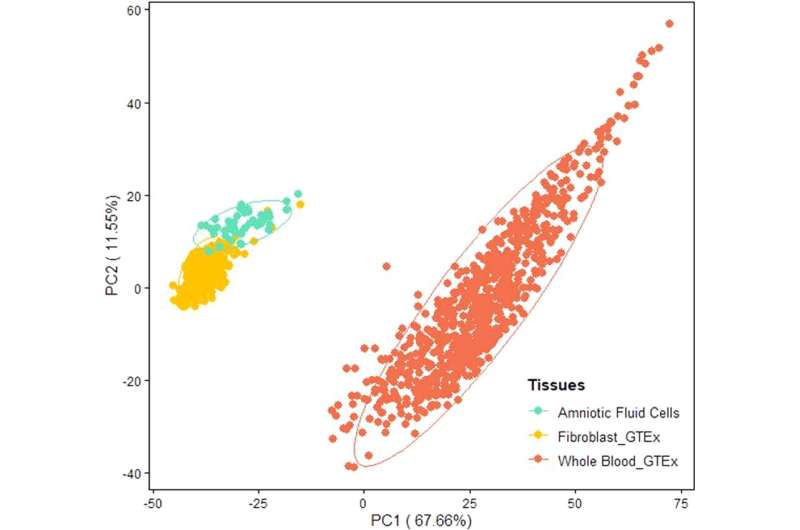RNA sequencing of amniotic fluid cells for prenatal diagnosis

A clinical research team from the University of Hong Kong (HKUMed) has used amniotic fluid cells obtained during 16-24 weeks of pregnancy as a novel sample type for RNA-sequencing in prenatal diagnosis to help more families with tailored clinical management. This is the first proof-of-concept study to demonstrate the potential clinical utility of amniotic fluid cells RNA-sequencing. The findings have been published in the journal, npj Genomic Medicine.
Rare diseases are usually genetic in origin. Although individually rare, collectively rare diseases were found to be 1 in 67 in the Hong Kong population, based on the team's previous study. The identification of genetic cause in rare diseases can provide accurate counseling for better clinical management and future pregnancy planning, which is essential to support the patients. Current technologies for prenatal diagnosis are largely DNA-based, with a large proportion (60-70%) remains undiagnosed, leading to clinical uncertainty and parental anxiety.
Recently, RNA-sequencing has been found to increase diagnostic yield by 10% to 36%; however, none of these studies focused on prenatal diagnosis. In addition, in spite of the availability of well-established large database cataloging the gene expression profile of different tissues for adult, similar publicly-available dataset for amniotic fluid cells reflecting the embryological and fetal stage is lacking. Further study and research on RNA-sequencing in prenatal setting is thus necessary.
The research team demonstrated the potential clinical utility of amniotic fluid cells RNA-sequencing. A baseline for gene expression profile of amniotic fluid cells was established by performing RNA-sequencing on over 50 amniotic fluid samples. Establishment of gene expression profile was an essential step in applying RNA-sequencing to the current selected clinical diagnosis workflow.
The researchers found that the number of well-expressed genes in amniotic fluid cells was comparable to other clinically accessible tissues commonly used for genetic diagnosis across different disease categories. The research team also compared RNA-sequencing data of four affected fetuses with structural congenital anomalies with the established baseline to detect potential outliers.
In collaboration with the Technical University of Munich in Germany, a bioinformatics pipeline was adapted to enhance the detection of outliers for subsequent analysis. Further in-depth curation showed that outliers can be identified in genes associated with the corresponding structural congenital anomalies in all four affected fetuses. Identifying the outliers provide more evidence at the RNA level to help diagnosis.
The findings of this study have significant implications in solving undiagnosed rare diseases in Hong Kong. It is the first time that amniotic fluid cells RNA-sequencing is reported to provide potential clinical utility in prenatal diagnosis in literature. With the identification of the genetic cause, precision medicine such as tailored clinical management and preimplantation genetic diagnosis for families with family history is possible.
More information: Mianne Lee et al, Diagnostic potential of the amniotic fluid cells transcriptome in deciphering mendelian disease: a proof-of-concept, npj Genomic Medicine (2022). DOI: 10.1038/s41525-022-00347-4

















